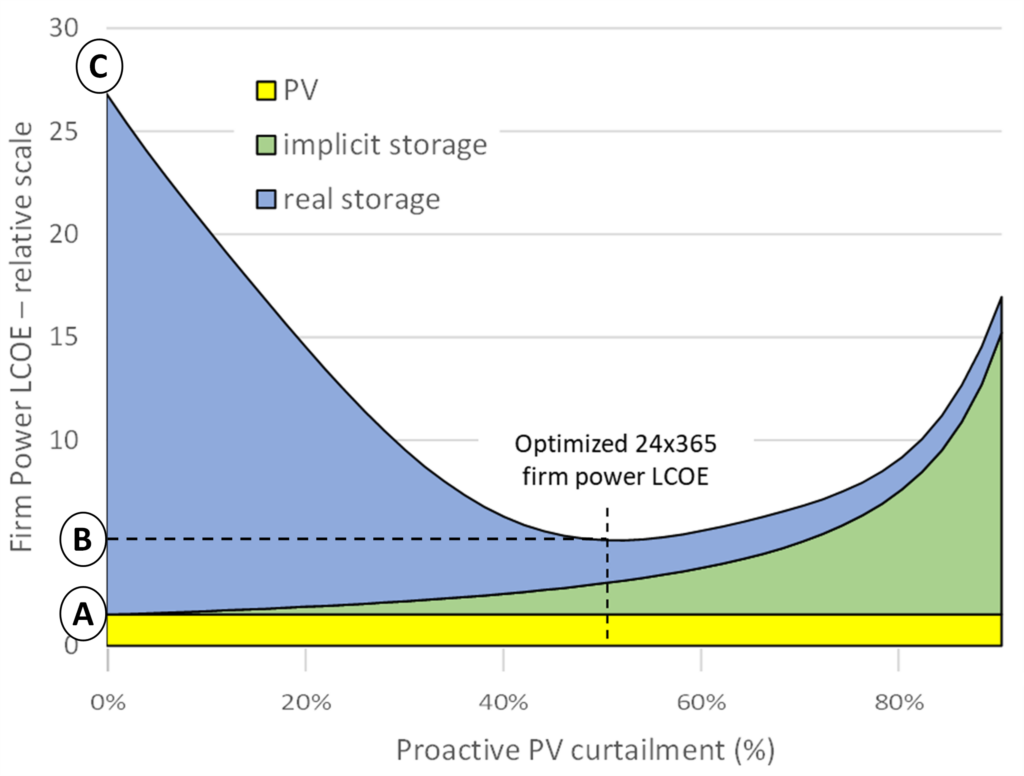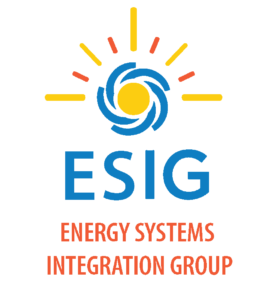Solar power has experienced remarkable growth in recent years. However, new challenges have become apparent as we strive to increase its penetration and reduce reliance on conventional generation. One of the largest challenges is how to transform variable solar power into a reliable and cost-effective source of energy that can meet our demand around the clock.
A groundbreaking report from the International Energy Agency (IEA), Firm Power Generation from Variable Renewable Energy Sources, explores this very question, presenting a transformative vision for grid-connected solar power. In this blog post, we delve into the report’s key findings and its implications for achieving nearly 100% clean energy grids worldwide.
Transforming Intermittent Variable Renewable Energy Resources into Firm and Dispatchable Power Generation

Marc Perez
Grid-connected solar power has flourished on the periphery of traditional dispatchable and baseload generation. At the same time, managing the residual demand becomes more complex and expensive as unconstrained solar penetration grows. This new report highlights intriguing possibilities for how solar power could transcend the margins and reshape the landscape of energy generation.
The IEA report proposes an ingenious solution: transforming intermittent variable renewable energy (VRE) resources, such as solar and wind, into firm and dispatchable power generation. Citing in-depth case studies and analyses, the report demonstrates that nearly 100% VRE power grids, capable of providing clean energy consistently throughout the year, are both feasible and economically viable.
The ability to dispatch VRE resources is essential to achieving this ambitious goal. By harnessing technologies like energy storage, blending renewables with other sources, geographic dispersion of generation assets, and supply/demand flexibility, VREs can directly displace most conventional sources while ensuring acceptable production costs. Some residual dispatchability in the form of renewable fuels (Fischer-Tropsch synfuels obtained through electrolysis, for instance) keep costs even lower. The keystone of this transformation involves the strategic overbuilding and operational curtailment of VREs. This is a concept called “implicit storage.”
Implicit storage refers to the fact that the more one overbuilds (and curtails) a VRE, the less storage is otherwise required to dispatch during times of low yield. This overbuilding directly displaces storage by providing the same balancing role, and the cost savings can be large. Regardless of the relative cost of the VRE and energy storage in question, a sweet spot exists where the marginal cost of additional overbuilt capacity is negated by a corresponding drop in marginal size and cost of storage. How much overbuilding is cost-optimal depends on these relative costs, the temporal shape of the resource in question, and its relation to the load reliably being served. An illustrative example can be seen in Figure 1.

Figure 1: Firm power levelized cost of energy (LCOE) as a function of proactively curtailed photovoltaics (PV), highlighting the respective contributions of PV, storage, and implicit storage (overbuilt/curtailed PV) to this LCOE. While unconstrained PV generation is arguably inexpensive (price point A), producing a firm kWh without implicit storage is overly expensive (price point C) because of the required quantity of long-term storage. Implicit storage substantially lowers the cost of firm, 24/365 generation (price point B).
Source: International Energy Agency, Firm Power Generation from Variable Renewable Energy Sources (Paris, France, 2023).
The full report, Firm Power Generation from Variable Renewable Energy Sources, provides a comprehensive examination of the challenges and strategies inherent in the transition to firm power generation. It dives into detail about implicit storage and provides valuable insights for policymakers, industry leaders, and renewable energy enthusiasts alike.
Innovative Solutions for a Sustainable Energy Future
The journey towards a sustainable energy future demands innovative solutions and transformative thinking. The IEA report sheds light on the potential for grid-connected solar power to firmly establish itself as the primary source of energy, displacing conventional generation economically and effectively. By optimizing VRE resources, implementing implicit storage, and leveraging technological advancements and economies of scale driving down the cost of VRE and storage, we can pave the way for economical 100% clean energy grids worldwide. Implicit storage in particular is key to rendering this transition economical
Marc J. R. Perez, Ph.D.
Clean Power Research

Hey Marc: We are starting to do this in the Philippines with Electric Distribution Companies. I’m looking for third party validation of our tech concepts and designs. I can’t remember if I asked you about this already. Any ideas?